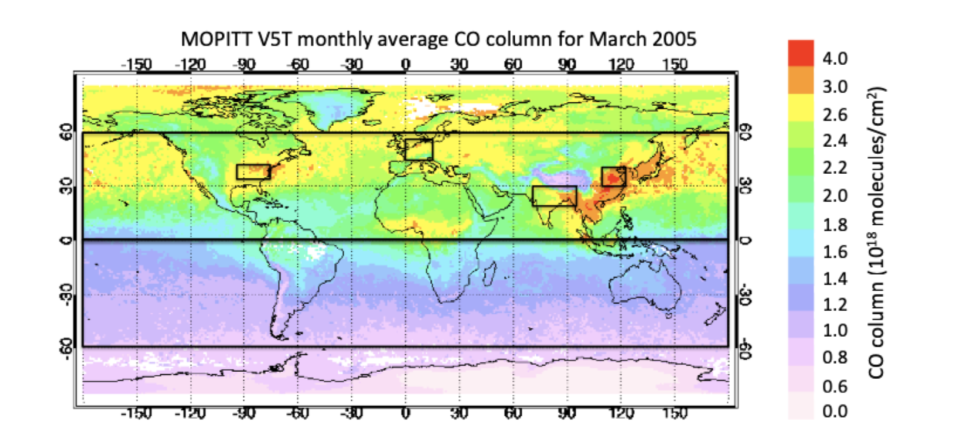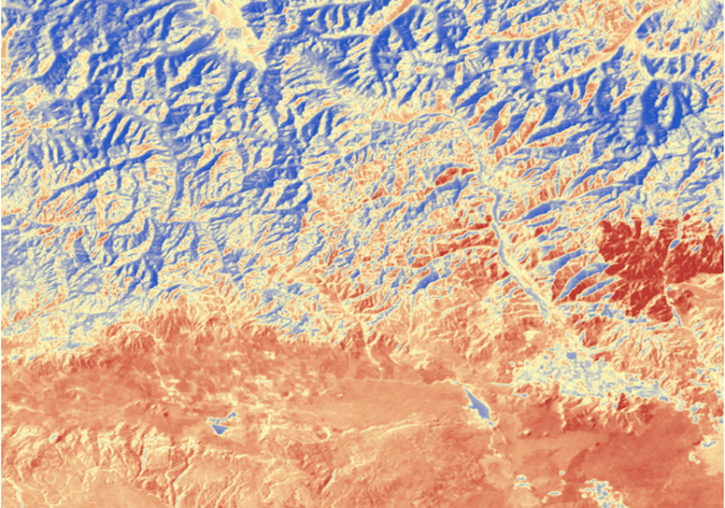On February 1, 2025, after nearly 25 years in orbit, the Measurements Of Pollution In The Troposphere (MOPITT) instrument aboard NASA’s Terra satellite stopped observing carbon monoxide (CO) in the atmosphere. NASA decided to retire the instrument because the aging Terra satellite no longer generates enough electricity to power the device.
NASA Is Releasing the Final Version of MOPITT's 25-Year Data Record
NASA’s Atmospheric Science Data Center (ASDC) will release a definitive final version (Version 10) of the 25-year MOPITT data record in August/September of this year and will offer improved data quality compared to previous versions.
“Even though it’s been in orbit for nearly 25 years, we still are learning more and more about the instrument and how to calibrate it more accurately,” said Dr. Daniel Ziskin, project scientist with the National Center for Atmospheric Research (NCAR) in Boulder, Colorado. “Each time we do a reprocessing, we gain more confidence in the quality of the data and we get closer and closer to agreeing with our validation data. So, there's an increase in data quality.”
NCAR operates the MOPITT Science Investigator-led Processing System (MOPITT SIPS), which is conducting the reprocessing of the instrument’s long-term data record. MOPITT SIPS has generated the instrument’s near real-time (NRT) datasets as well as products including atmospheric profiles of CO volume mixing ratio, CO total column values, gridded CO daily averages, and monthly means. ASDC ingests MOPITT data products (excluding the NRT data) for archiving and distribution. Version 10 will be relased solely in the cloud, where users will be able to access the data, along with services and tools for subsetting, regridding, and visualization, all of which will make analyzing 25 years of atmospheric observations easier.
25 Years of Unique and Valuable Data
MOPITT was the Canadian Space Agency’s contribution to NASA’s Earth Observing System (EOS) and launched as part of Terra’s payload in 1999. It was the first space-based instrument to provide continuous measurements of CO on a global scale and one of the earliest instruments to employ gas correlation spectroscopy, a technique that uses near- and thermal-infrared wavelengths of light to produce profiles of CO and other gasses in 5-kilometer layers within a vertical column of troposphere.
“Carbon monoxide is a reactive gas. It doesn't build up in the atmosphere and so one of the things we are able to see is that it doesn’t mix particularly well because CO has a lifetime of about a month,” Ziskin said. “MOPITT allowed us to trace and identify some of the major sources of atmospheric CO, such as seasonal agricultural burning in Africa and Asia, large wildfires, and large-scale fossil fuel combustion and industrial pollution in dense urban areas.”
This focus on CO continues to make MOPITT and its data unique, even in its retirement.
“One of the things that’s unique about MOPITT was its ability to retrieve CO data close to Earth’s surface. There are other instruments, such as the Tropospheric Emissions: Monitoring Pollution (TEMPO) and the Ozone Monitoring Instrument (OMI) that can measure gasses in the troposphere, but they aren’t sensitive to CO,” said ASDC scientist Dr. Hazem Mahmoud. “This has enabled [MOPITT] data to be used in a variety of applications, including monitoring impacts to public health, because its data could be integrated with data from ground-based instruments.”
These graphs show 12-month running averages for the Northern Hemisphere (left) and the Southern Hemisphere (right) of total column carbon monoxide measurements from MOPITT (black lines) and the Atmospheric Infrared Sounder (AIRS) (red lines). As displayed here, the data from both instruments is in good agreement. Credit: University of Toronto
By reprocessing MOPITT’s long-term data record, Ziskin aims to ensure that MOPITT’s contributions remain a critical part of any current and future initiative to understand the long-term trends of CO in the atmosphere. He and his SIPS colleagues plan to create a unique CO product that uses data from a single MOPITT channel that has been operating consistently for the past 25 years and is sensitive to CO in the lower troposphere, allowing atmospheric scientists to use to get a clear idea of the state of the atmosphere.
In addition to creating new products from existing MOPITT data, instrument scientists and ASDC personnel are working with science teams from other satellite missions, such as NASA's Cross-track Infrared Sounder (CrIS) and the European Space Agency’s Tropospheric Monitoring Instrument (TROPOMI), to build on MOPITT’s achievements and establish a continuous record of global CO observations to aid in long-term and historical studies of its presence in the atmosphere.
Engaging in such work, said Mahmoud, will ensure MOPITT’s value lives on.
“MOPITT data has transformed our understanding of atmospheric carbon monoxide, air quality, and the global carbon cycle. As we transition to end-of-life operations, it’s important for users to know that support for MOPITT data will continue through its long-term data record,” he said. “We encourage the community to take advantage of updated documentation, improved data access tools, and user support resources as they become available. And we will always support MOPITT users and answer their questions on Earthdata Forum.”




